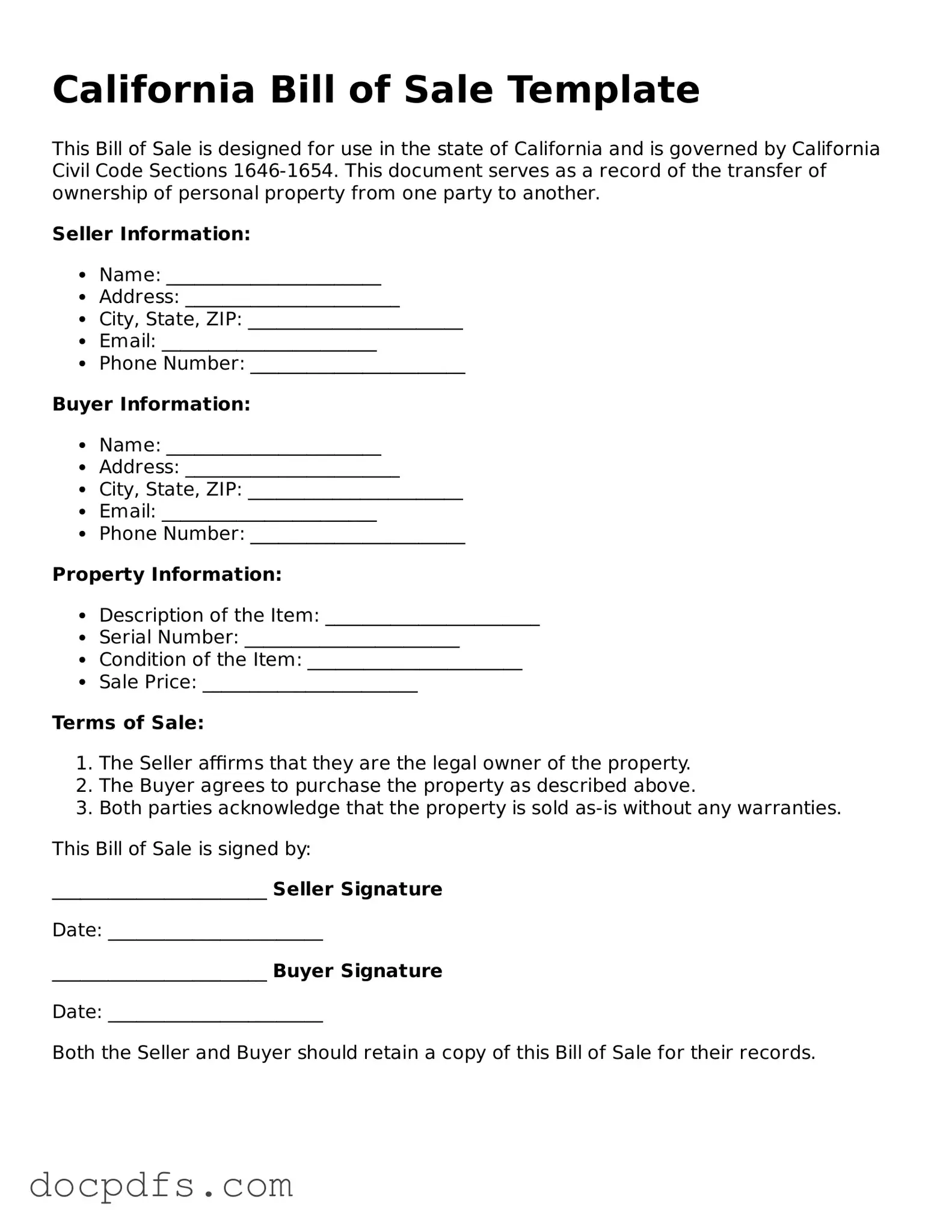The California Bill of Sale form serves as a vital document for individuals engaged in the transfer of personal property, such as vehicles, boats, or equipment. This form not only provides a clear record of the transaction but also protects both the buyer and seller by outlining essential details. Key components include the names and addresses of both parties, a description of the item being sold, the sale price, and the date of the transaction. Additionally, the Bill of Sale may contain information regarding any warranties or representations made by the seller, ensuring transparency in the sale. Proper completion of this form can facilitate a smooth transfer of ownership, making it an indispensable tool in various sales scenarios. Whether you are a private seller or a business owner, understanding the nuances of the California Bill of Sale can significantly enhance your transaction experience.
